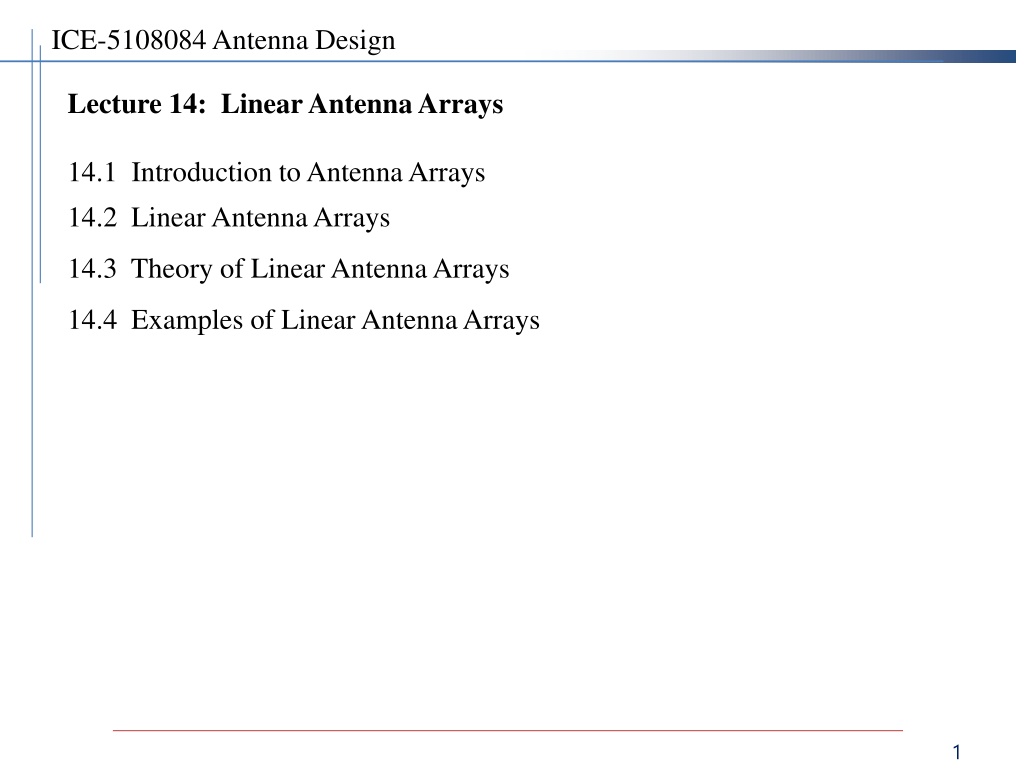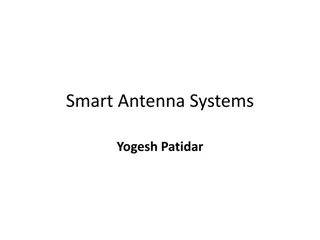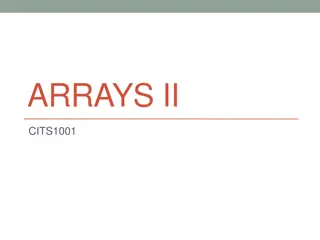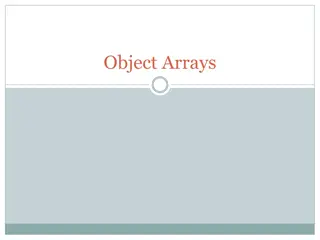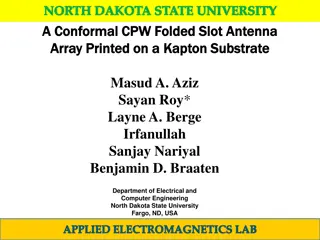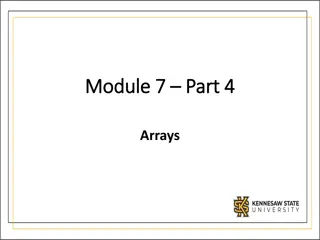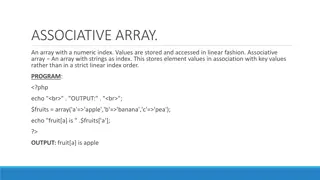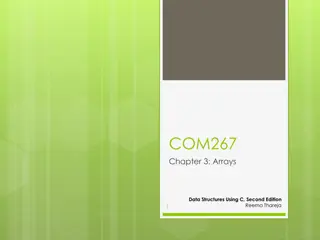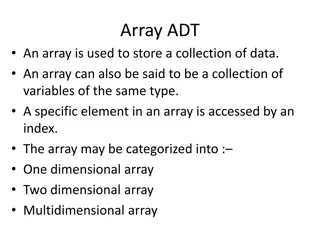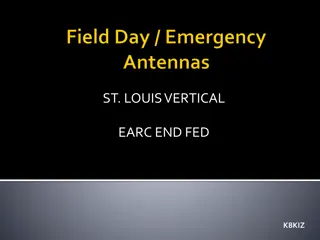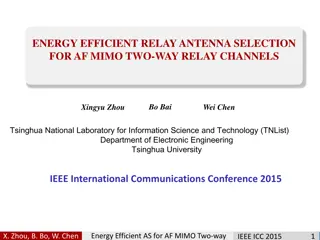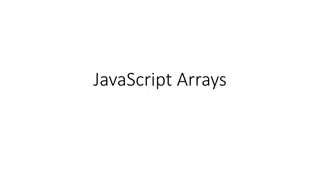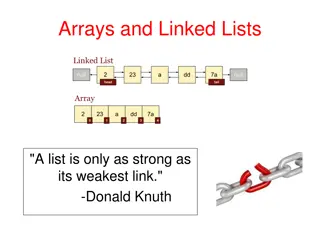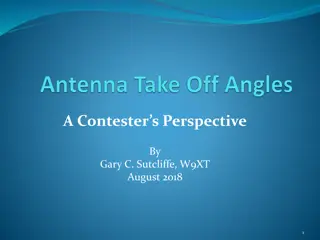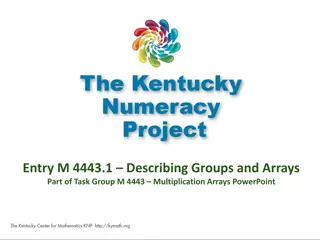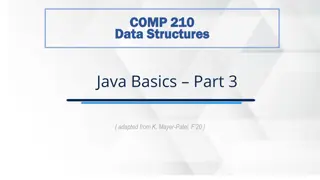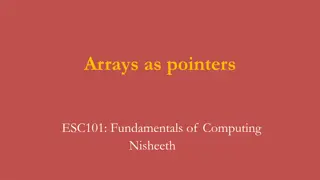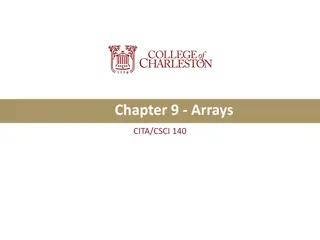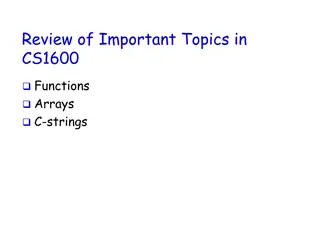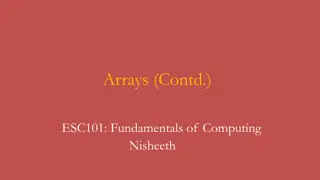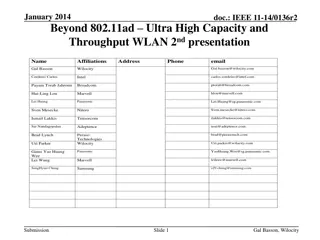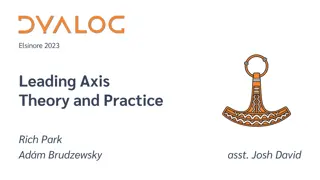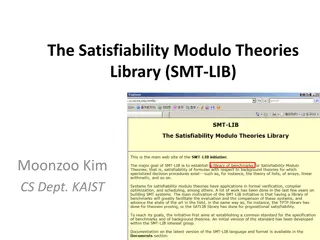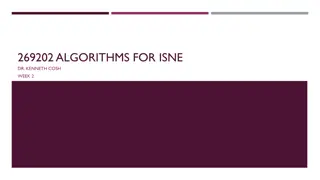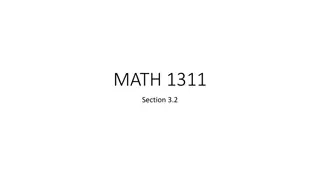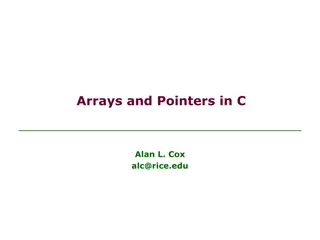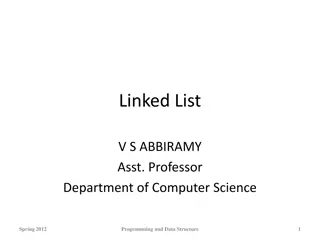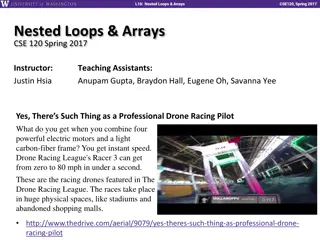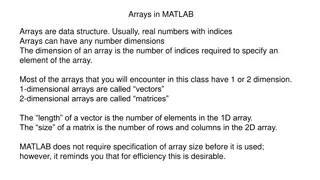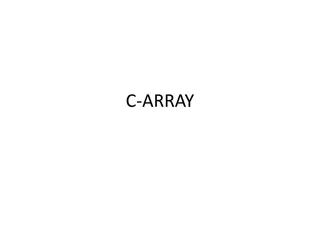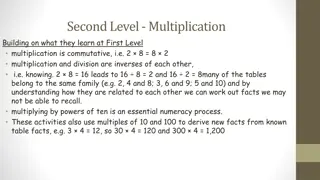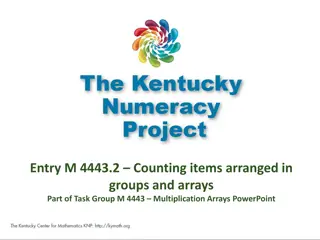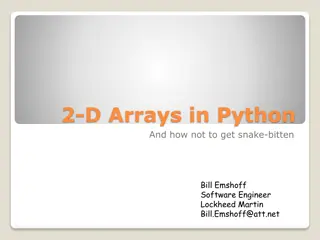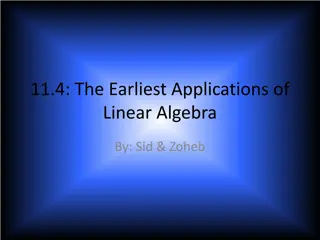Linear Antenna Arrays: Theory and Applications
Introduction to linear antenna arrays, including the concept of distributing radiating elements, combining array elements for specific beam characteristics, and the theory behind linear antenna arrays. Exploring the benefits of linear arrays in obtaining narrow beams, fan beams, and scanning capabilities, with examples illustrating their functionality and array factors.
Download Presentation

Please find below an Image/Link to download the presentation.
The content on the website is provided AS IS for your information and personal use only. It may not be sold, licensed, or shared on other websites without obtaining consent from the author. Download presentation by click this link. If you encounter any issues during the download, it is possible that the publisher has removed the file from their server.
E N D
Presentation Transcript
ICE-5108084 Antenna Design Lecture 14: Linear Antenna Arrays 14.1 Introduction to Antenna Arrays 14.2 Linear Antenna Arrays 14.3 Theory of Linear Antenna Arrays 14.4 Examples of Linear Antenna Arrays 1
14.1 Introduction to Antenna Arrays What is an antenna array? - Distribute many of a same radiating element over a line or a plane or a surface. - Combine array elements using a feed network for 1) high directivity (narrow beamwidth), 2) a scanned main beam, 3) multiple beams (a multi-beam antenna), 4) a shaped main beam 2
14.2 Linear Antenna Arrays Why linear antenna arrays? - To obtain a narrow beam in one direction and a broad beam in the other direction (= a fan beam). - Or to scann a fan beam in one direction. Example = a search antenna in azimuth plane 3
14.3 Theory of Linear Antenna Arrays Array factor: - Far-field approximation to the radiated field: parallel-ray approximation r y B r r' r r x A - Far field of a single element field; r r ( ) jk r jkr e e r r jk = ( , ) = ( , ) E e e I I e B B B 4 4 r r ( , ): element factor e 4
- Far field of two elements: At x = 0, antenna 1 with I1; at x = d, antenna #2 with current I2 y r1 r2 dcos x d I1 I2 = = , cos r r r r d 1 2 ( cos ) jkr jk r d e e ( , ) = ( , ) + ( , ) = ( , ) + E E E e I I 1 2 1 2 4 4 r r 2 1 r 1 ( r ) d r 2 jkr e cos jkd ( , ) = ( , ) + E e ( ) I I e 1 2 4 r cos jkd = + AF : array factor I I e 1 2 5
- Two-element array factor example: y I1 = 1 I2 = 1 x /4 /4 6
- Principles of pattern multiplication: jkr e cos jkd ( , ) = ( , ) + E e ( ) I I e 1 2 4 r jkr e : free-space propagation factor 4 r ( , ): element factor e AF( , ): array factor | ( , )| | ( , )AF( , )|: array pattern factor = E e 7
-Array factor of a linear array: y Number of elements: N Element spacing: d d cos d cos Element phase shift: x 2d d (N 1)d jn = : element current I A e n n 1 1 N N + ( cos ) ( cos ) jn kd jn kd = = AF : array factor I e A e n n = = 0 0 n n + = = cos 0, cos kd kd 0 0 : main beam angle 0 = = current phase current magnitude, A n n 1 N jn = AF A e n = 0 n = + cos : arr ay factor angle kd 8
- Beam scanning: The main beam is tilted toward the direction of decreasing phase. AF is maxumem when 0 at cos 0 if = = = 0 : element phase difference / 2; 0 if kd 0 / 2 0 0 - Broadside array: main beam is normal to the array axis 0= 90 - Scanned-beam array: main beam is tilted away from the array normal 0 < 0< 90 , 90 < 0< 180 - Endfire array: main beam is in the direction of the array axis 0= 0 , 180 9
-Array factor of a uniformly excited linear array: = = = ... 1 A A 0 1 N sin( sin( / 2) / 2) N j 1) /2 ( 1) ( j N j N = + + + = AF 1 ... e e e sin( N / 2) / 2) N ( ) = : normalized array factor f sin( - Properties of AF of a uniformly excited linear array: Period: 2 Even function of Symmetric about Main-null (1st null) distance: = 4 / N Sidelobe null distance: = 2 / N Even 10
- Graphical method for plotting the array factor: Example: N = 4, = /2, d = /2 = + = + = 2 / cos cos , kd d d z + d d 11
- Grating lobes (): additional main beams occurring when the element spacing is too large. 1 N + | | 2 1 kd = cos kd 0 1 1/ 1 |cos + N : condition for no grating lobe d | 0 | f( )| (Array factor) 2 2 /N 0 With grating lobe kd kd No grating lobe 12
14.4 Examples of Linear Antenna Arrays WERA (WavE RAdar) ocean radar system 15
14.4 Examples of Linear Antenna Arrays WERA (WavE RAdar) ocean radar system - Tx: 4 v-monoples - Rx: Linear array of 8-16 v-monopoles - HF surface wave radar for oceanography: FMCW, V-pol. following the earth curvature. Receive Bragg effect (back-scattered) signals - University of Hamburg - Frequency selection: Carried out prior to each radar cycle (10-20 minuites) - Specifications: 30W CW, 15-250 km range, 0.1-1.5 km resolution, 3-6 deg. beamwidth, 4-48 MHz, 50-500 kHz bandwidth, 2-10 Hz PRF electronically steered (software beamforming, 60 scan) -Applications: Long-range ship tracking, Vessel traffic services, Search and rescue, Disaster warning for cyclones and tsunamis, Environmental science 16
4-bay batwing antenna (super-turnstile antenna) array for FM radio broadcast - Super-turnstile antenna: Horizontally polarized Omnidirectional in the horizontal plane Wideband 4-dipole array for digital TV reception - Wire bowtie antenna = fan dipole antenna: wideband - Wire-grid ground plane: small weight, low wind resistance 18
Cylindrical reflector antenna feed: - University of Sydney - Molongo Observatory Synthesis Telescope (MOST) - 843MHz, reflector 11.6 778 m, feed 352 elements Base station antenna for 4G cellular communication - 12-element linear array of crossed dipoles - Crossed dipoles in a baffle (a cavity) 19
ICE-5108084 Antenna Design Lecture 14: Linear Antenna Arrays 20
